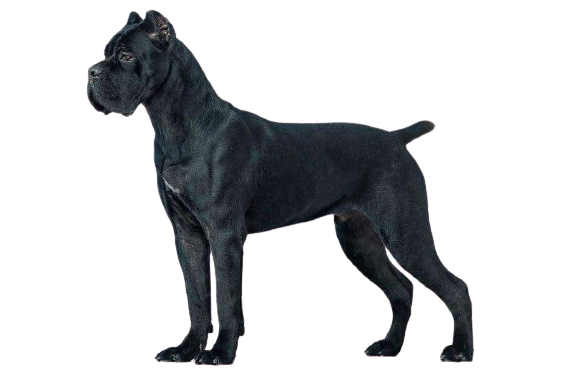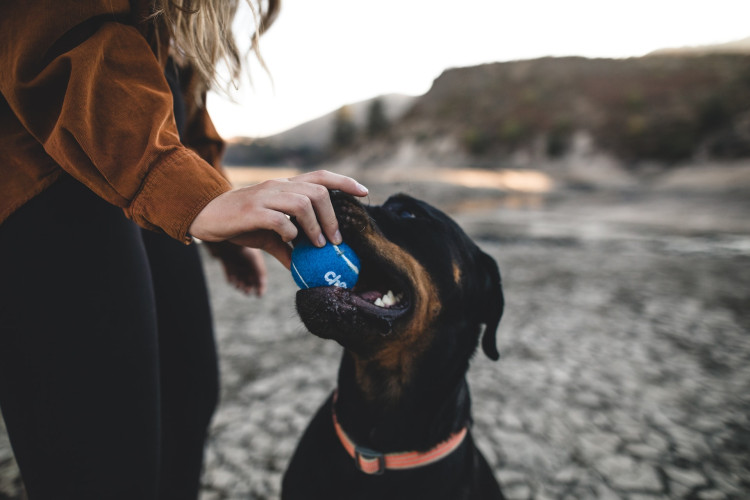
Cane Corso
USD $1500-$2000 Price Avg.
Working Dogs
Group
Purebred
Breed Type
Large
Size
10-11 years
Lifespan
Breed Information
| Group | Working Dogs |
|---|---|
| Popularity/Rank | 37 |
| Origin | Italy |
| Other Names | Cane Corz, Cane Di Macellaio, Italian Mastiff |
| Breed Type | Purebred |
| Price (Avg.) |
USD $1500-$2000
How much does it cost to buy a Cane Corso? Cane Corso are usually priced differently from breeder to breeder and from place to place. As a rough guide, you can expect to pay between $1500 to $2000 if you purchase your dog from a reputable breeder. The price will increase if the dog has a fantastic pedigree. Dogs that already have basic training maybe even more expensive. But, most Cane Corsos can be adopted through a shelter for a lower fee. |
| Size | Large |
| Weight |
Male: 99-110 pounds (45-50 kg),
Female: 88-99 pounds (40-45 kg) |
| Height |
Male: 24-27 inches (64-68 cm),
Female: 23-25 inches (60-64 cm) |
| Lifespan | 10-11 years |
| Recognized by |
AKC, FCI
The American Kennel Club in 2010 as a Working breed. And FCI in the Pinscher and Schnauzer - Molossoid and Swiss Mountain and Cattledogs group, in the Molossian type s |
| Purpose | hunting, guard dog |
| Date of Origin | unknown |
| Ancestry | Roman molassian |
Appearance & Maintenance
| Coat | Dense |
|---|---|
| Coat Colors | Black, Brindle, Chestnut, Fawn, Gray, Red |
| Grooming Level | |
| Shedding Level | |
| Eye Color Possibilities | Brown |
| Nose Color Possibilities | Black, Brown |
| Coat Color Possibilities | Black, Fawn, Gray, Red |
| Coat Length | Medium |
| Coat Density | Normal |
| Coat Texture | Straight |
| Recommended Brushes | Nail Clipper, Slicker Brush |
| Brushing Frequency | Monthly |
Breed Characteristics
| Temperament | Brave, Cheerful, Courageous, Daring, Entertaining, Loyal, Peaceful, Quiet, Social |
|---|---|
| Intelligent | |
| Trainability | |
| Playfulness | |
| Sensitivity Level | |
| Affection Level | |
| Social Interaction Required | |
| Barking | |
| Watchdog Ability | |
| Territorial | |
| Biting Force | Moderate |
| Mouthiness | |
| Impulse to Wander or Roam | |
| Prey Drive | |
| Adaptability | |
| Tolerates Being Left Alone | |
| Fighting Dog | Yes |
Good & Friendly with
| Apartment Life Friendly | |
|---|---|
| Stranger Friendly | |
| Kid-Friendly | |
| Cat Friendly | |
| Dog Friendly | |
| Office Friendly | No |
| Senior Citizens Friendly | |
| Pet Friendly | |
| Friendly with First Time Owners | No |
| Service Dog | Not really |
| Therapy Dog | Not really |
| Detection, Sniffer or Security Dog | Not really |
| Search and Rescue Dog (SAR) | Not really |
| Boat Dog | Not really |
| Cart Pulling or Drafting Dog | Yes |
Health Elements
| Health Issues | |
|---|---|
| Health Problems | Arthritis, Bloat, Cherry Eye, Demodectic Mange, Ectropion, Entropion, Hip Dysplasia |
| Hypoallergenic | No |
| Energy Level | |
| Exercise Required | |
| Sleeping Required | |
| Weight Gain Potential | |
| Weather & Climate | Tolerates warm and cold weather. |
| Stinkiness | Medium |
| Drooling tendency | |
| Activity Level | Moderate |
| Rec. Walk Mileage Per Week | 10 miles |
| Minutes of Activity Per Day | 60 minutes |
Food & Costing
| Avg. Daily Food | Recommended daily amount: If you are feeding a high-quality dry food, your Corso will probably eat 4 to 5 cups a day. |
|---|---|
| Cups Per Day | 3 cups |
| Daily Cost | $1.50 - $1.90 |
| Monthly Cost | $39.00 - $52.00 |
Reproducibility
| Gestation Duration | 60-64 days |
|---|---|
| How often can the Cane Corso have a litter? | Once a year. |
| Litter Size | 4-6 puppies (Once a year.) |
Description
The Cane Corso is a large, muscular breed of dog that originated in Italy. It is a descendant of the ancient Roman Molossus and is known for its strength, loyalty, and intelligence. The Cane Corso has a short, thick coat that comes in a variety of colors including black, gray, fawn, red and brindle. Its head is broad with a slightly rounded skull and its muzzle is long and tapered. Its ears are set high on the head and its eyes are almond-shaped with an alert expression.
The average lifespan of the Cane Corso is 10 to 12 years. They typically weigh between 88 to 110 pounds (40 to 50 kg) and stand between 24 to 28 inches (61 to 71 cm) tall at the shoulder.
The Cane Corso has an even temperament but can be protective when necessary. They are loyal companions who bond closely with their owners but can also be independent thinkers who need firm training from an early age. They are intelligent dogs who respond well to positive reinforcement training methods such as clicker training or reward-based methods like treats or praise.
Cane Corsos are generally friendly towards other dogs but may be wary of strangers or unfamiliar animals if not properly socialized from an early age. They tend to get along well with children if they have been raised around them from puppyhood but should always be supervised when interacting with young children due to their size and strength.
The temperament of the Cane Corso can vary depending on how it was raised as a puppy; some may be more laid back while others may have higher energy levels that require more exercise or mental stimulation throughout the day in order for them to stay happy and healthy.
In terms of health, the Cane Corso is generally considered healthy although they can suffer from hip dysplasia or elbow dysplasia which can cause lameness in one or both legs if left untreated by a veterinarian. Other health issues include bloat (gastric torsion), eye problems such as entropion or ectropion, heart disease, skin allergies, ear infections, hypothyroidism and von Willebrand’s disease which affects clotting ability in some breeds including this one so regular checkups at your vet are recommended for all dogs regardless of breed type!
When it comes to adaptability level this breed does best when given plenty of exercise each day as well as mental stimulation through activities like obedience classes or agility courses which will help keep them mentally stimulated while also providing physical activity too! This breed does not do well when left alone for long periods so having another pet companion would be beneficial if you plan on leaving your dog home alone often during work hours etc… Additionally they do best in homes where there’s someone around most days since they thrive off human interaction!
Overall this breed makes an excellent family pet due to their loyal nature combined with their intelligence making them easy trainable pets that will form strong bonds with their owners over time! Additionally they make great guard dogs due to their size & strength combined with their natural protective instincts making them ideal watchdogs for any home!
History
The Cane Corso is a large Italian Molosser, which was originally used for hunting and guarding. The breed is known for its loyalty, strength, and courage. The Cane Corso is a descendant of the ancient Roman Molossian dogs. It is believed that the Cane Corso is the only true descendant of the Roman Molossian dogs. The Cane Corso was used in warfare by the Roman army. The breed was also used as a guard dog by the Italian nobility. The Cane Corso nearly became extinct after World War II. The breed was saved by a few dedicated breeders in Italy. The Cane Corso became popular in the United States in the 1990s.
The Cane Corso is a large dog with a muscular body and a short coat. The head is large and square with erect ears. The eyes are dark and almond-shaped. The teeth meet in a scissors bite. The neck is thick and muscular with no dewlap (loose skin). The topline is level from the withers to the croup (rump). The chest is deep and broad with well-sprung ribs. The tail is docked (cut) to half its original length or less. There are two types of coats: short and stiff or long and soft. Coat colors include black, blue, brindle, fawn, grey, red, silver, tan, or white with black markings (called "mask").
The average height of a Cane Corso at the withers (top of shoulder) is 24-27 inches for males and 23-25 inches for females. Males weigh between 88-110 pounds and females weigh between 77-99 pounds




